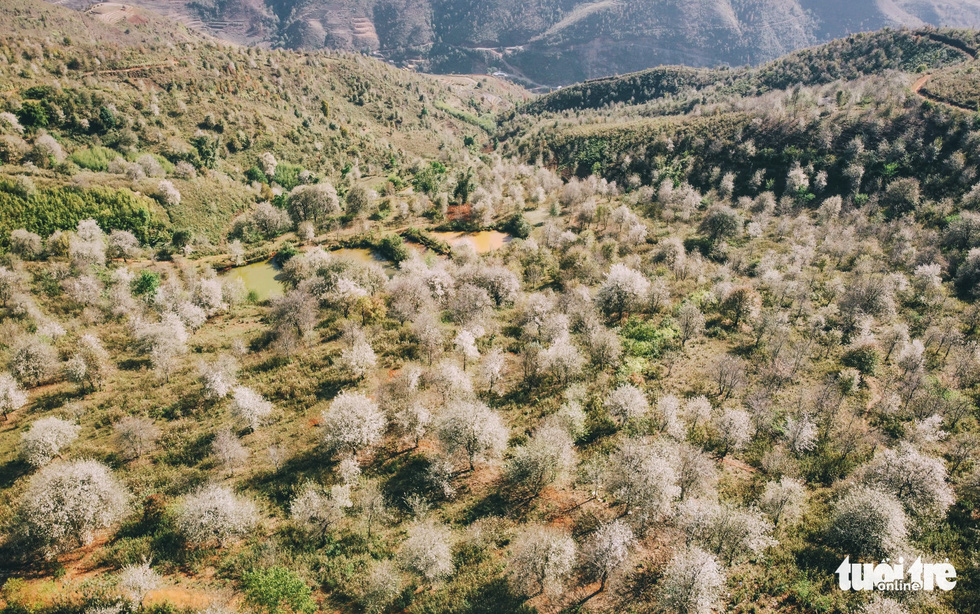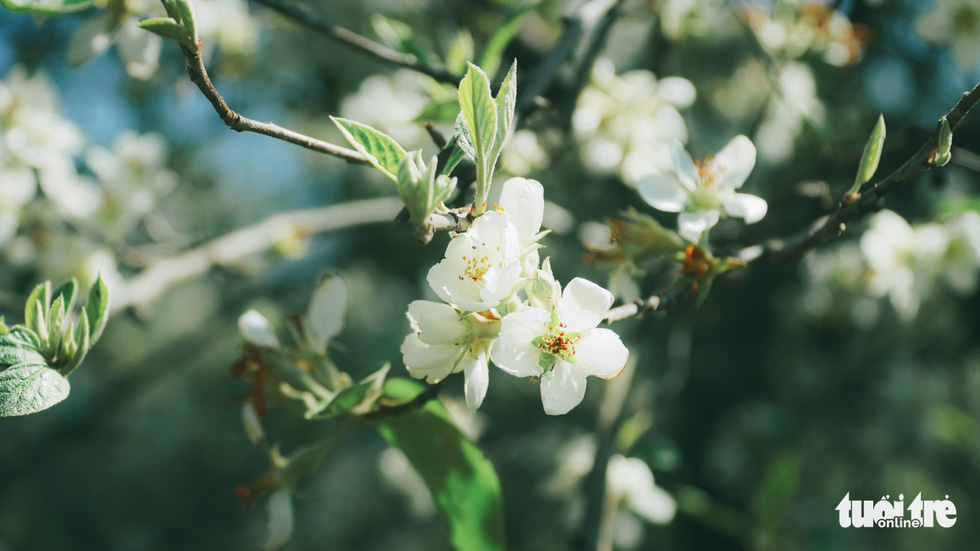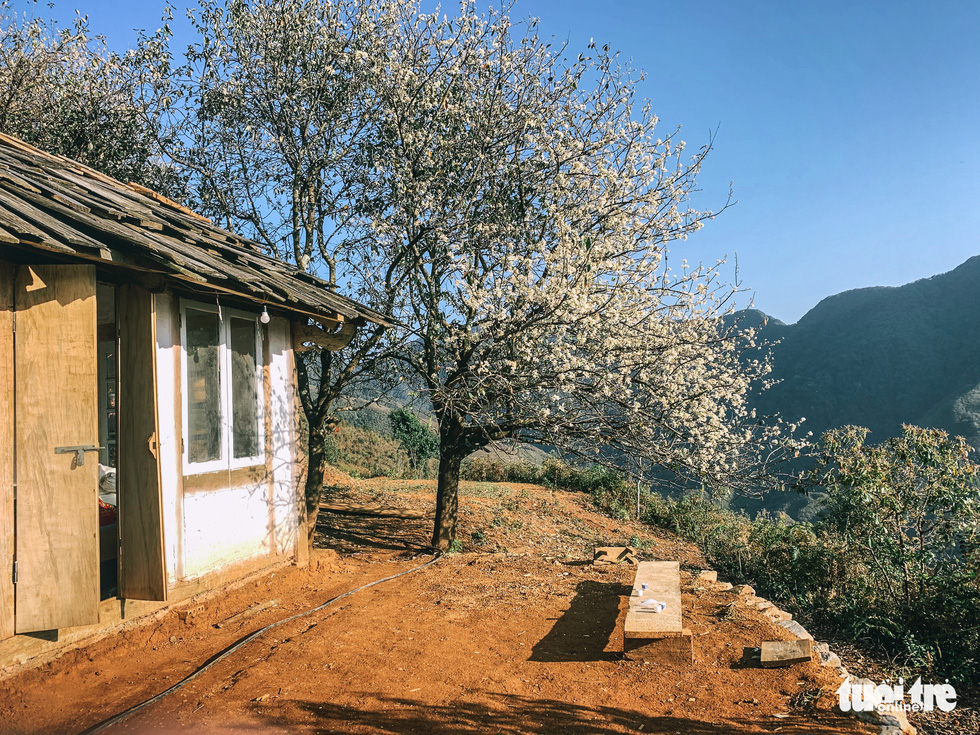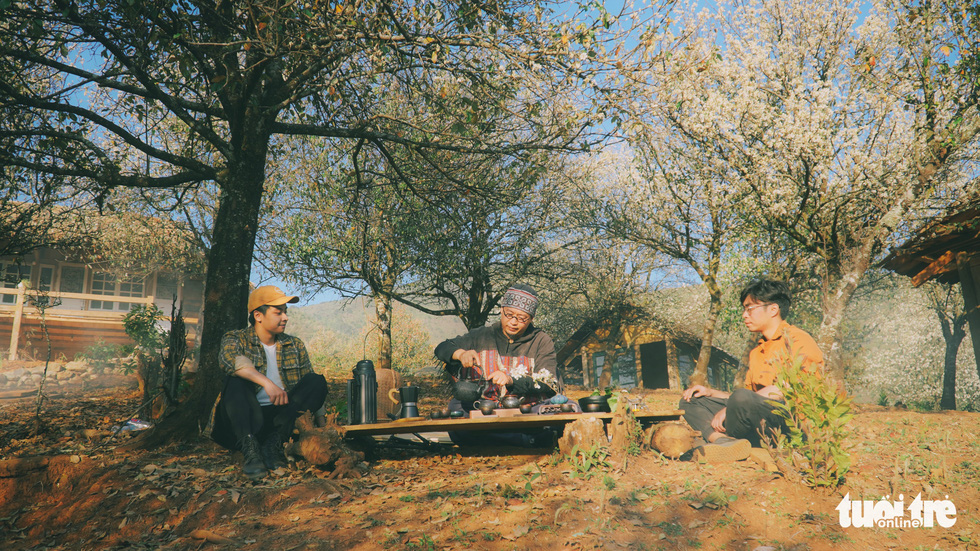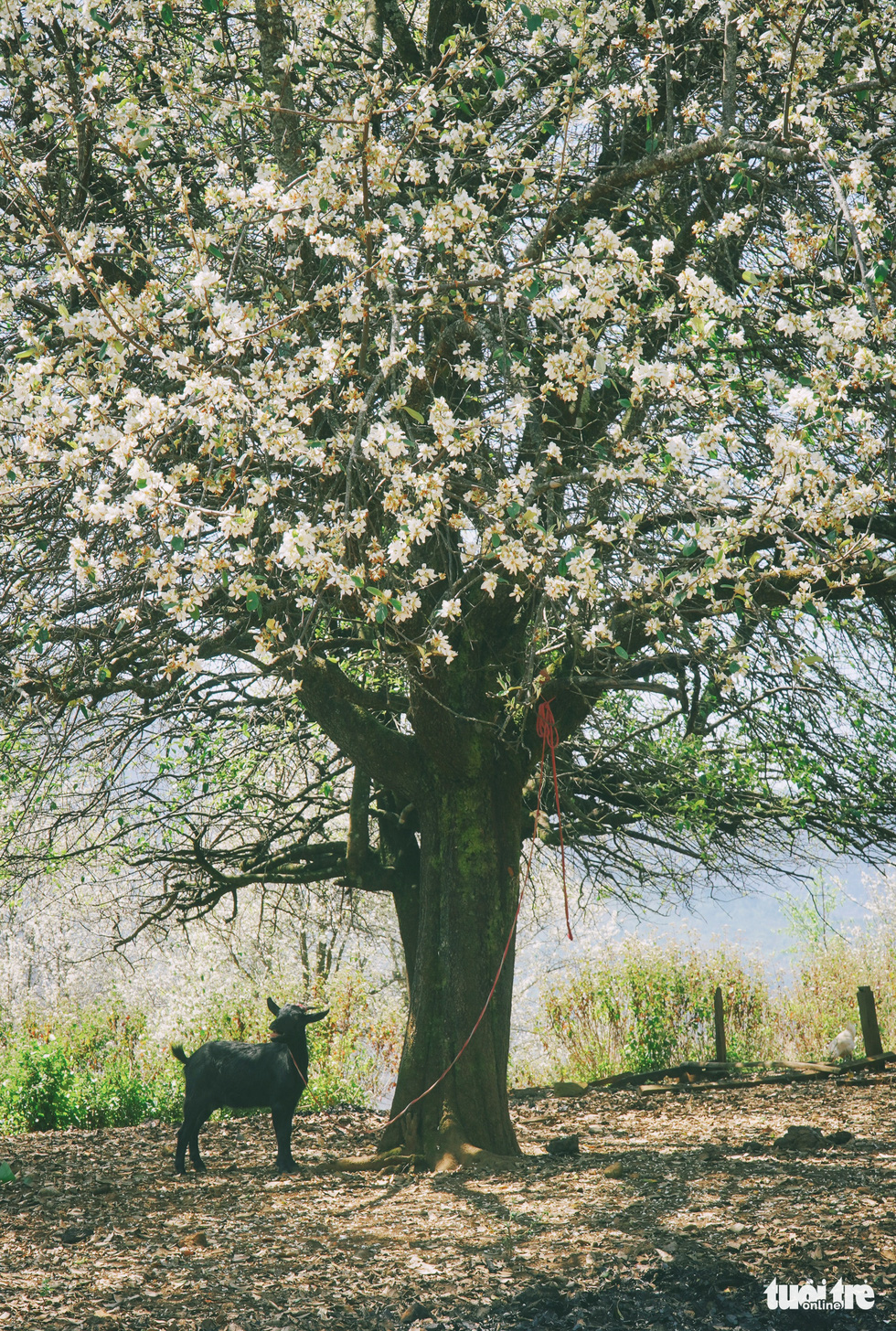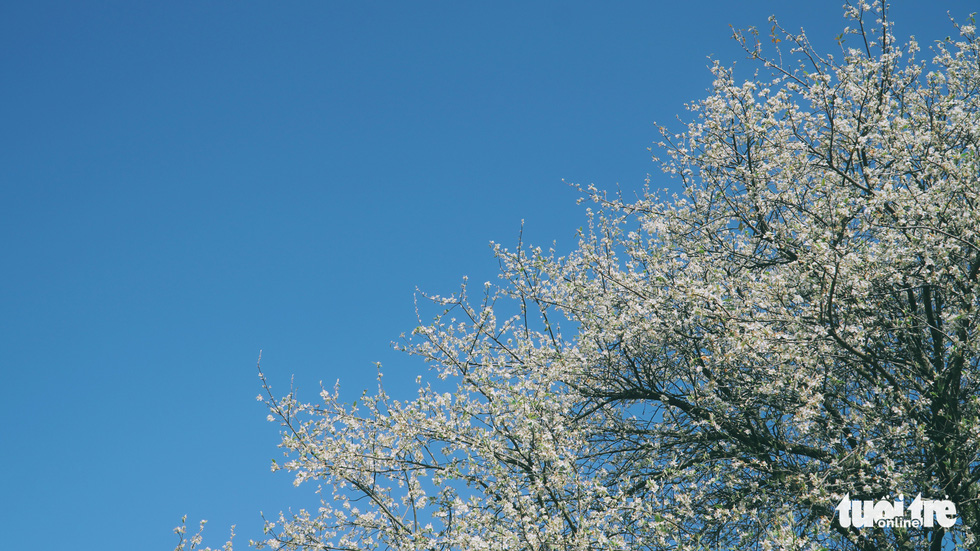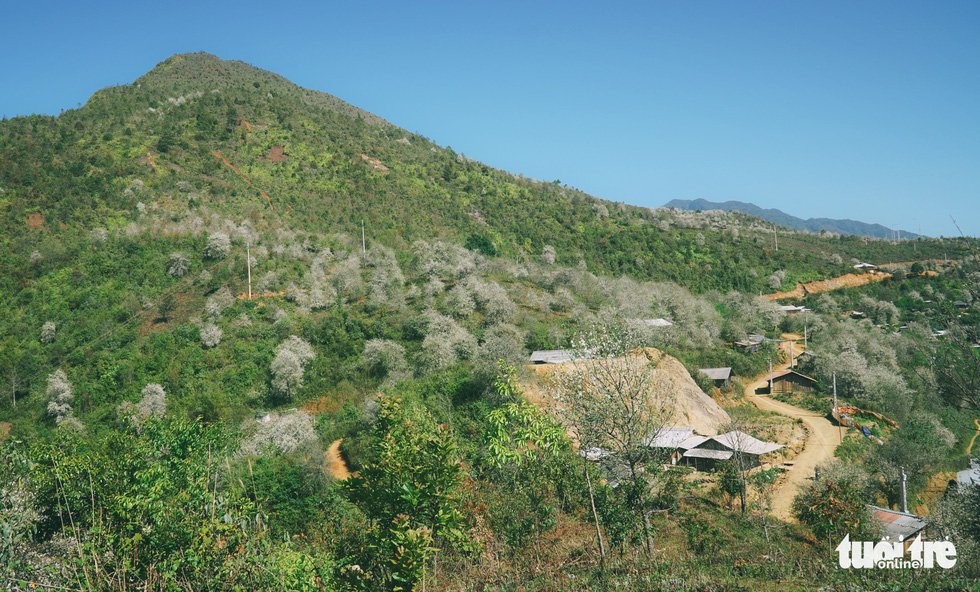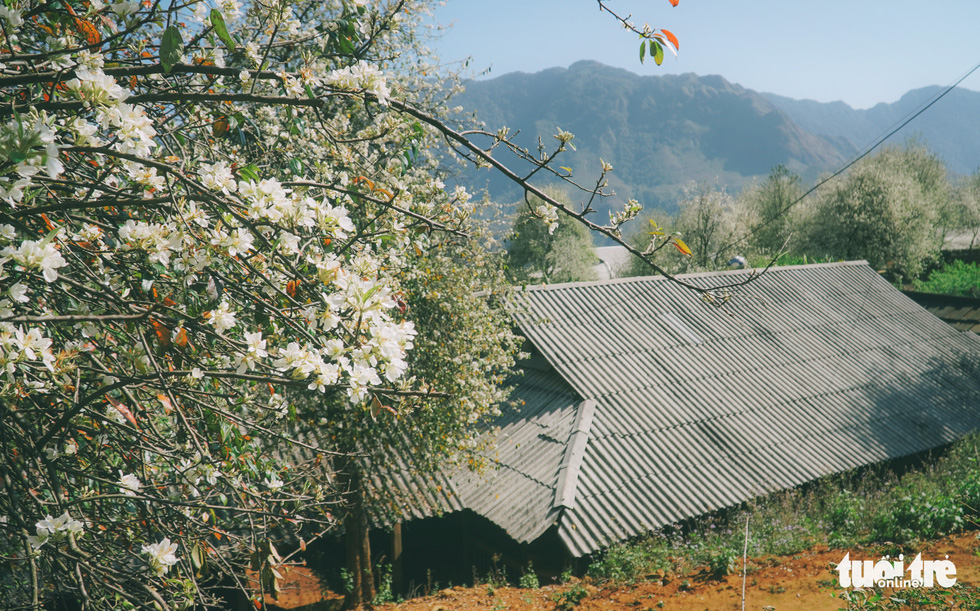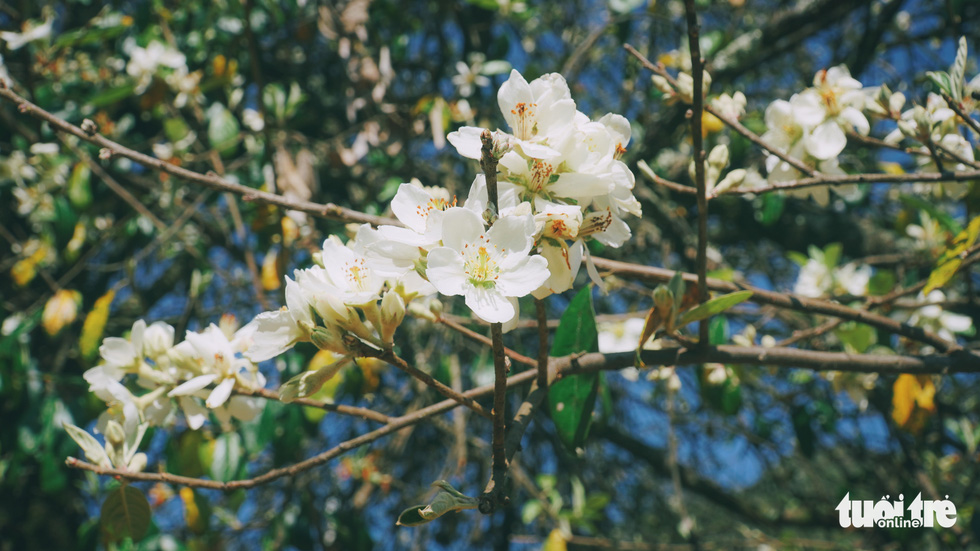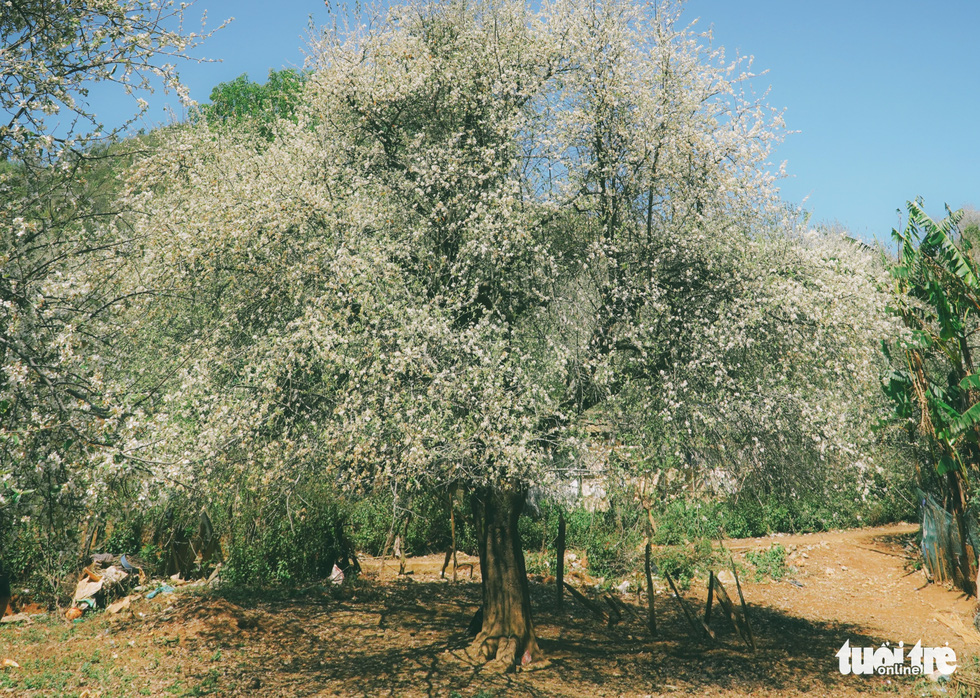The grove of 'hoa son tra' (docynia indica blooms) surrounding Nam Nghiep Village in Vietnam's northwestern mountainous area is attracting tourists from all over the country thanks to the magnificent blanket of white petals cast by its old trees.
The docynia indica tree, known in Vietnamese as 'son tra' or 'tao meo,' is a signature tree in the northwest region, offering opportunities for locals to take advantage of the local tourist industry in Nam Nghiep Village, Ngoc Chien Commune, Muong La District, Son La Province.
Though docynia indica once grew naturally in the wild, locals now farm the trees themselves on plantations throughout the village.
|
|
| A bird’s-eye view of the docynia indica flower forest in Nam Nghiep Village, Ngoc Chien Commune, Muong La District, Son La Province, Vietnam. Photo: Quang Kien / Tuoi Tre |
Docynia indica trees typically bloom in March, offering poetic beauty as they immerse Nam Nghiep Village in a sea of white.
Currently, about 13,000 ha of docynia indica are grown in Nam Nghiep.
To reach the village’s docynia indica forest, tourists must travel a difficult 173-kilometer route from the center of Moc Chau Town in Son La Province.
Nam Nghiep Village is home to members of the Mong ethnic minority.
The road to the village is mostly winding passes, with the last 11 kilometers involving a high, zigzag mountain road.
But the rugged journey becomes worth it the moment rows of docynia indica appear around the bend.
|
|
| Docynia indica blossoms in Nam Nghiep Village, Ngoc Chien Commune, Muong La District, Son La Province, Vietnam. Photo: Quang Kien / Tuoi Tre |
The docynia indica trees in Nam Nghiep are so old and large that one person cannot fit their arms around the entire trunk.
Docynia indica blossoms are white with a yellow pistil. They tend to bloom in groups every year from late February to April, with mid-March being considered the 'height of the season.'
The trees bear fruit at the conclusion of the flowering season, and the fruit is then harvested in September and October.
The local people soak the fruit in wine, honey, and sugar. They sell for about VND300,000 (US$13.12) per kilogram.
|
|
| Docynia indica trees blossom afront a Mong house in Nam Nghiep Village, Ngoc Chien Commune, Muong La District, Son La Province, Vietnam. Photo: Quang Kien / Tuoi Tre |
Besides enjoying son tra's flowering beauty, visitors to Nam Nghiep Village can also experience the culture and cuisine of the indigenous Mong people who call the areas 'home.'
According to Quang Kien, a tourist who recently visited the area, he and the friends he traveled with did not expect such a warm reception from the locals.
"Our group arrived in the village at noon so everyone was hungry, but the food had not been prepared,” Kien shared.
“Then, a friend of mine asked to buy food at a local house and the people inside invited us in for lunch.
“We were so fortunate to be able to enjoy the famous 'ruou tao meo' [a popular wine in the northwest mountainous region made from the fruit of the docynia indica tree].
"The locals were incredibly nice, hospitable, and always willing to help us when we needed them.
"They even said they might start selling their food to tourists in the future.”
|
|
| Two young visitors have a taste of the tea from a local in Nam Nghiep Village, Ngoc Chien Commune, Muong La District, Son La Province, Vietnam. Photo: Quang Kien / Tuoi Tre |
Nam Nghiep's docynia indica forest is a new addition to Son La Province's tourist map, so tourism facilities in the area are fairly limited.
Visitors can stay in the village by contacting a local homestay, most charging VND100,000 ($4.37) per night per person.
There are also areas where travelers can set up tents for camping.
|
|
| A goat is tied to a docynia indica tree in Nam Nghiep Village, Ngoc Chien Commune, Muong La District, Son La Province, Vietnam. Photo: Quang Kien / Tuoi Tre |
Most locals recommend that travelers bring extra warm clothing to avoid the cold temperatures at night and in the early morning.
In addition to admiring the beauty of the docynia indica flower forest, visitors to Nam Nghiep Village can enjoy magnificent sunrises and sunsets.
Particularly, trekkers can ascend Ta Chi Nhu, Vietnam's seventh-tallest mountain, at an altitude of 2,979 meters above sea level, after one and a half hours of walking from Ngoc Chien Commune.
|
|
| White docynia indica flowers are set against the blue background of the sky in Nam Nghiep Village, Ngoc Chien Commune, Muong La District, Son La Province, Vietnam. Photo: Quang Kien / Tuoi Tre |
|
|
| An aerial photo of the entrance to the docynia indica forest in Nam Nghiep Village, Ngoc Chien Commune, Muong La District, Son La Province, Vietnam. Photo: Quang Kien / Tuoi Tre |
|
|
| Docynia indica trees blossom afront a Mong house in Nam Nghiep Village, Ngoc Chien Commune, Muong La District, Son La Province, Vietnam. Photo: Quang Kien / Tuoi Tre |
|
|
| Docynia indica trees blossom in Nam Nghiep Village, Ngoc Chien Commune, Muong La District, Son La Province, Vietnam. Photo: Quang Kien / Tuoi Tre |
|
|
| A docynia indica tree in full bloom in Nam Nghiep Village, Ngoc Chien Commune, Muong La District, Son La Province, Vietnam. Photo: Quang Kien / Tuoi Tre |
Like us on Facebook or follow us on Twitter to get the latest news about Vietnam!




